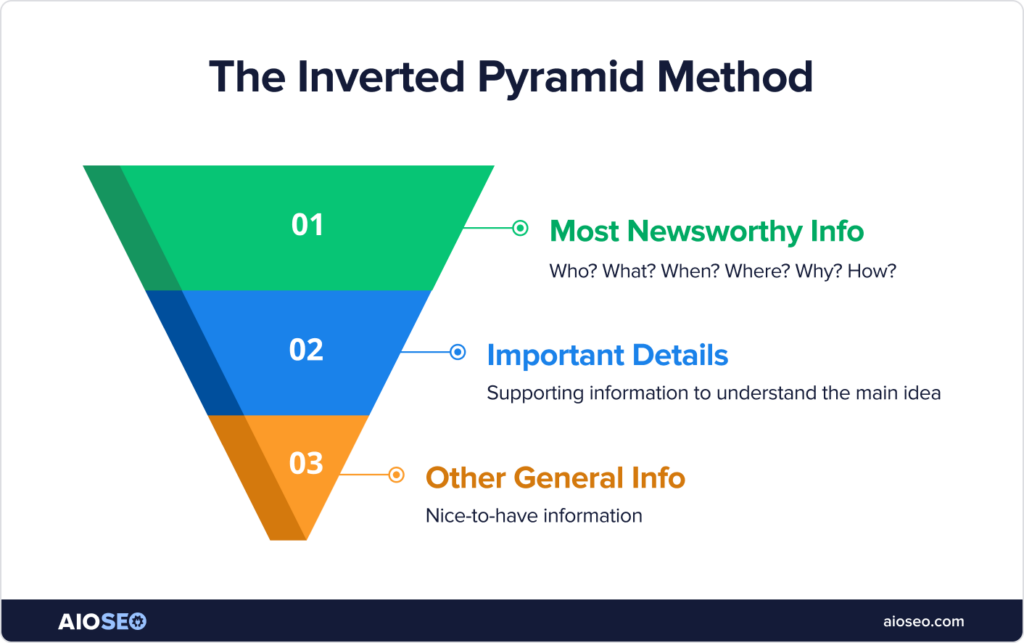I think this article did a great job with describing how/why people skim articles for specific information. This article also asked a rhetorical question which kept me involved as I read the article. I think that is very important because it helps engage the reader into the writing. I think this article does a great job of not only explaining that people skim content frequently but also explaining how to convince your audience into reading the full article.
This article also provides the importance on emphasizing important information in creating a connection with the audience. Emphasizing information that is important is crucial because it allows for the audience to not overlook the main subjects of the writing. However, it is easy to create emphasis by using the “inverted triangle method “. This article states the effect “inverted triangle method” provides a better opportunity for the audience (who are skimming) to find the important information instead of skipping over it.

The article then emphasizes the importance of including visuals, images, charts, etc. . I think this is very effective because in most cases where I do not understand what certain paragraphs mean, any images, charts, or any other forms of visuals tend to help clear up any confusion.

The only part of this article that I disagree with, is keeping paragraphs within 25 to 35 words. Ultimately, I think it is very impractical to stay within 25 to 35 words for a full paragraph length considering many times you will only be able to get one or two sentences whereas I believe roughly 3 to 5 sentences should be per paragraph.
Although I disagree with the paragraph length stated in the article(25-35 words), I do still believe paragraph should be short. Overall, I agree with the rest of this article. I think it does a great job of getting points across, while also still keeping the reader engaged throughout the whole article.
Images are definitely a good supplementary help/addition to readings, and I liked how you touched on the importance of convincing readers to stop skimming. I do skim a lot due to my busy schedule but seeing content that is condensed with helpful images, and etc. does increase my “attention” to read it entirely. Which makes me wonder if we should be focusing on tailoring content for skimmers or focusing more on getting skimmers to read it completely?
I really liked the images choices you made. They made for great supplementary material of the content of your post and I was able to read more thoroughly because of them. Images have become increasingly important for writers online; if they want to bring in viewers you need to stand out with either: a flashy clickbait, or something very important. Infographs are great for this, they are condensed information into one single image, easy to read and follow along with and can be fun to simply look at. However; we don’t want them to completely replace writing itself, what do you think is a good balance of images/writing for an article/other online spaces?
Great job on blog post 7! I liked how you utilized underlining to make important information stand out. I also enjoyed that because you were talking about how crucial it is to do so. I have never used the inverted pyramid method in my writing, but I do recognize how useful it can be for the skimmers of the world. Personally, I skim while reading very often so this method helps me find the important information. Would you consider yourself a skimmer or do you read every word of an article?